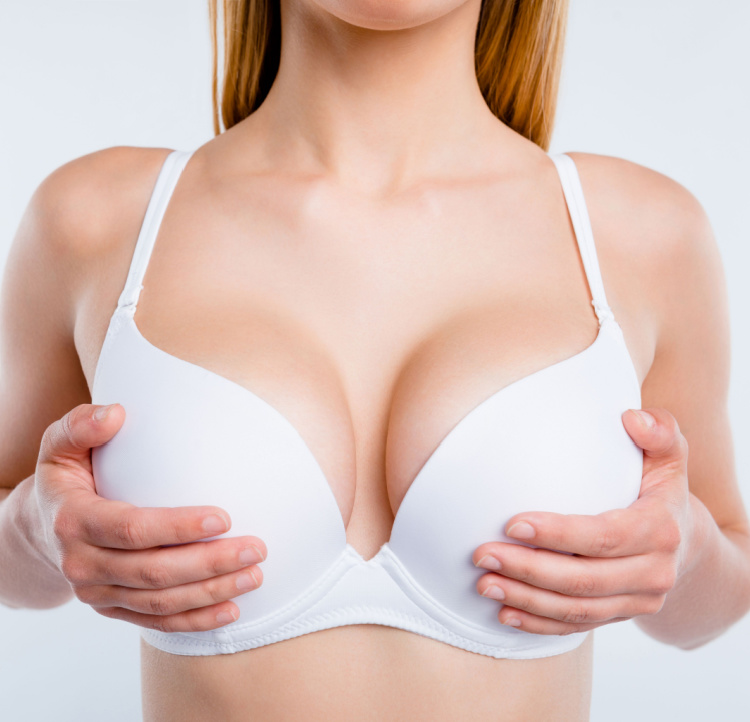Procedure
Breast Implant Revision
Dr. Kimberly Short, a board certified plastic surgeon, has been a consultant for Mentor’s LEAD program, which is the Leadership, Experience, and Development for Breast Augmentation. Dr. Short has also served on the National Council of Leaders for Breast Aesthetics. Dr. Short is one of the premier breast implant revision surgeons in the Midwest. Patients seeking implant revision procedures are patients whom have already had implant surgery and are seeking improvements with the breast shape or size or desire to make modifications of the implant or implant pocket. Implant surgery is the most common procedure Dr. Short performs at the Gillian Institute. The doctor’s expertise is breast surgery with an emphasis on implant surgery. Dr. Short is an innovator with implant revisions and performs very difficult, challenging breast cases on a routine basis. Dr. Short participates in educational forums annually with the most elite breast surgeons in the United States to discuss the advancements and research with implant technology, breast contracture techniques using a protocol for prevention and correction of breast contractures, and using multiple techniques to approach symmastia repair with and without the use of tissue matrix graft.

Candidates
Patients who experience one or more of the following may be candidates:
- A desired change in size, smaller or larger in breast cup size
- A desired change in shape, improvement in cleavage (less or more cleavage)
- A desired improvement in implant softness and less firmness or hardness
- Change in implant pocket size or position of the implant (Displacement of the implant)
- Improvement of animation changes (appearance of implants with flexion)
- Ruptured implant or Exchange of implants desired
- Capsular contracture (scar tissue formed around the implant) correction
- Rotation of a textured anatomical implant
- Post-pregnancy or weight loss changes
- Stretching of the skin envelope, implant capsule, implant pocket following pregnancy
- Symmastia Repair
Anticipated Results:
- More full, youthful, uplifted breasts
- Desired improvement in breast size and breast shape
- Improvement in cleavage
- Desired change in breast implant pocket or position of the implant
- Treatment of breast capsular contracture (breast tightening or firmness resolved); resulting in a softer, more natural breast appearance
- Less lateral displacement
- Less implant movement with flexion

Consultation
Dr. Short will discuss options for implant revision surgery based on your specific desires and expectations related to changes in size, shape, implant pocket modifications or implant position, implant selection (saline or silicone).
Dr. Short will also discuss options including implant selection, incision types, placement of the implant and desired cup size at the consultation. Every surgery is individualized to best fit each patient’s specific needs. The implants available are saline (salt water) or silicone.
Typically, Dr. Short will utilize the same incision to avoid a new incision or scar; but in some patients, a new incision must be made to prevent post-operative complications and to achieve a more improved result.
Procedure
Typically, a small incision may be made under the breast crease (inframammary breast crease), around the inside part of the areolar (periareolar), in the axilla/armpit (transaxillary) or using a previous mastopexy or breast lift incision. The implant may be placed under the muscle (subpectoral), under the fascia (subfascial), partially under the muscle (dual plane), or above the muscle (subglandular). Dr. Short will find the right size implant by taking breast and chest measurements during the consultation, visual pictures selected by you, and by placing implant “sizers” in the operating room and evaluating the sizer appearance in an upright position. Dr. Short also will also discuss in detail your wishes and expectations related to the desired change you wish.
For implant pocket modifications, a capsulotomy (release of the capsule), capsulectemy (removal of the previous capsule) or capsulorrhapy (implant pocket modifications) may be recommended to meet the patient’s specific desires and expectations. The breast capsule, made naturally by your own body, is immediately formed after surgery. The capsule is typically soft, thin, and mobile. But sometimes, for unknown reasons (usually multi-factorial), the capsule may become thicker, resulting in scar tissue, that can cause the breast implant to become tight, firm, and difficult to move, resulting in a higher implant position and undesired breast appearance. In order to improve the breast shape and breast tightness, the capsule may need to be released or removed, which is referred to as a capsulotomy or capsulectemy. We will implement a variety of safeguards during surgery and after surgery to prevent the recurrence of a capsular contracture.
In some cases, the breast implant pocket may need modifications i.e. tightening of the outside (lateral breast) or inside (medial breast) implant pocket to ensure the appropriate implant position. Dr. Short may need to use permanent and non-permanent sutures in surgery to perform repairs and corrections of the implant pocket. Dr. Short may use the same implant pocket with modifications or Dr. Short may need to re-create a new implant pocket. The doctor may also be able to use the capsule, made naturally by your own body after the original surgery, to stabilize internal sutures and provide a longer lasting result.
In many cases, this procedure can be more reconstructive in nature and may require more time in the operating room and more recovery period. Depending on the surgery, breast drains may be placed after surgery for the first week. In some cases, the breast implants may stay the same and other cases, the breast implants will be recommended to be removed and replaced with new breast implants in order to achieve breast shape, volume, or positioning improvements. All these options will be discussed with you at your consultation and a detailed, customized treatment plan will be discussed.
Planning the Surgery
Time off Work:
7-14 days; a drain may or may not be placed in the breast pocket depending on the extent of the revision. If the surgery requires minimal implant pocket revisions and/or capsule modifications, then the recovery period will be less.
Caregiver:
You will need a caregiver for the first 24-48 hours after your surgery. If you do not have someone to care for you a nurse can be provided for a minimal fee.

The Day of Surgery
The procedure is performed on an outpatient basis under general anesthesia. The procedure can take approximately 1-6 hours, depending on the extent of the surgery and the type of revision recommended.
After Surgery
You will return home with light dressings and you are able to take a shower after 72 hours. If drain(s) are placed, then no shower is recommended until the drain(s) are removed in the office. If drain(s) are placed, the drains are removed between 1-3 weeks after surgery. Skin glue or steri-strips are applied to the incisions for 2 weeks. Scar treatment options are available at your two-week appointment. The scars will fade over time. The surgery does not eliminate the ability to breastfeed. Light activities can be resumed as tolerated at 10-14 days. Aerobic activity may resume at 4-6 weeks. Dr. Short requires that you begin breast massage within 3 days after surgery. The breast massage will aid in the settling of the implants, decrease the swelling, and increase the softness of the implants. The breast massage will also decrease the risk of a capsular contracture.
If a previous capsular contracture has occurred, then Dr. Short will implement a capsular contracture protocol at 2 weeks following surgery as well to decrease the risk of a recurrence of a capsular contracture. The capsular contracture protocol includes oral medications that have been shown in the plastic and reconstructive literature to reduce the incidence of a contracture, breast massage, and weekly external ultrasound treatments. Light activities can be resumed as tolerated and vigorous aerobic activities may resume approximately three to four weeks post-surgery. You will be encouraged to continue the breast massage techniques aggressively for 6 weeks. If pocket modifications have also been performed, then special bras may be recommended to ensure appropriate healing of the breast implant pocket. Typically, these special bras are recommended for the first 6-8 weeks.
Note: It is important to address any concerns with The Gillian Institute at the time of your consultation. There is some risk, as with any surgical procedure. Minor complications that do not affect the final outcome occur occasionally. Major complications are unusual. We can explain the procedure and potential complications to you in detail and she can assist you in determining if a removal and replacement is right for you.